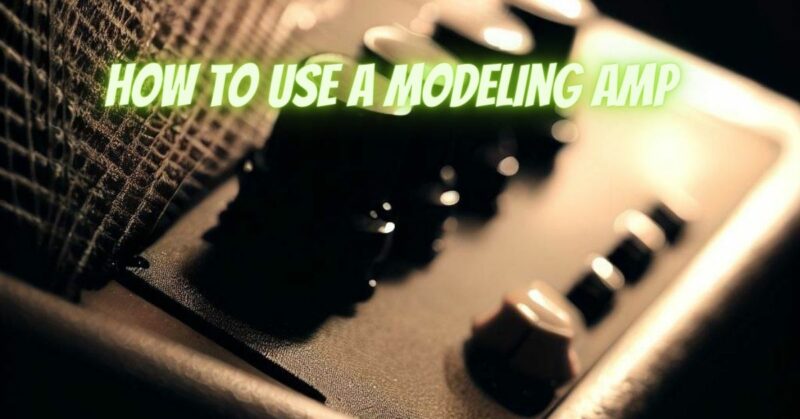Modeling amps have revolutionized the way guitarists approach tone and effects. These versatile digital powerhouses offer an array of amplifier simulations and effects, giving you the ability to craft a wide range of sounds within a single unit. To make the most of your modeling amp’s capabilities, let’s delve into the essential steps to effectively use a modeling amp.
1. Familiarize Yourself with the Controls:
Modeling amps come with a variety of knobs, buttons, and switches that allow you to shape your sound. Take the time to understand the purpose of each control, such as gain, tone, volume, and effects parameters. Consult the amp’s manual to learn how these controls interact with the amp models and effects.
2. Choose Amp Models:
Modeling amps typically offer a selection of amp models that emulate various amplifier types. These models could include classics like Fender, Marshall, Vox, Mesa Boogie, and more. Experiment with different amp models to find ones that suit your preferred genres and playing styles.
3. Adjust EQ and Tone:
Use the amp’s EQ controls, such as bass, middle, and treble, to shape the tonal characteristics of your sound. Each amp model might respond differently to EQ adjustments, so take your time to find the sweet spots that match your sonic vision.
4. Explore Effects:
Modeling amps often include a range of built-in effects, such as delay, reverb, modulation, and more. Experiment with these effects to add depth and dimension to your sound. Adjust parameters like speed, depth, feedback, and mix to achieve the desired effect intensity.
5. Create Presets:
Most modeling amps allow you to save and recall presets. Once you’ve dialed in a tone you like, save it as a preset. This way, you can easily switch between different sounds during live performances or practice sessions.
6. Blend Amp Models and Effects:
One of the exciting aspects of modeling amps is the ability to combine different amp models and effects to create unique sounds. For example, you could use a British amp model with a touch of delay and reverb for a classic rock sound, or experiment with more unconventional combinations.
7. Adjust Input Gain:
Many modeling amps feature an input gain or drive control. Adjusting this control affects how the amp models respond to your playing dynamics. Lower gain settings result in cleaner tones, while higher gain settings provide more distortion and saturation.
8. Practice and Experiment:
Mastering a modeling amp takes practice and experimentation. Spend time playing around with different settings, amp models, and effects to discover new tones and textures. Don’t be afraid to push the boundaries and explore uncharted sonic territory.
9. Use Footswitches and Expression Pedals:
Some modeling amps come with footswitches or the option to connect external footswitches and expression pedals. These accessories allow you to switch between presets, toggle effects on and off, and control parameters in real-time during performances.
10. Connect to Other Gear:
Modeling amps can be connected to external gear such as effects pedals, multi-effects processors, and recording interfaces. Experiment with incorporating your existing gear to expand your sonic possibilities.
In conclusion, using a modeling amp is an exciting journey of sonic exploration. By familiarizing yourself with the controls, amp models, effects, and presets, you can harness the full potential of your modeling amp to create a diverse array of tones that reflect your musical style and artistic vision. With time, practice, and an open mind, you’ll be able to craft signature sounds that set you apart in the sonic landscape.


